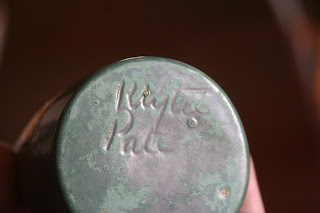




I can't recall where this all started but the more I read and research this family, the more fascinated I become..( and disturbingly, the more pottery I collect)
David was the third son (and fourth child) of Merric and Doris Boyd, grew up in Murrumbeena at "Open Country" and like the rest of the family, was artistically gifted. He married Hermia Lloyd Jones in the late 1940s, also an artist and together they made beautiful ceramics for the next 10-15 years, travelling to London and France before returning to Australia and eventually pursuing other creative media.
Here is my collection so far.. Just so different to anything else around at the time - (it was the time of gumnuts & drip glaze followed by the Bernard Leach "stoneware revolution") - but still carries that Boyd flavour, and so tactile- the glaze on the small coffee cup is like satin..
















































